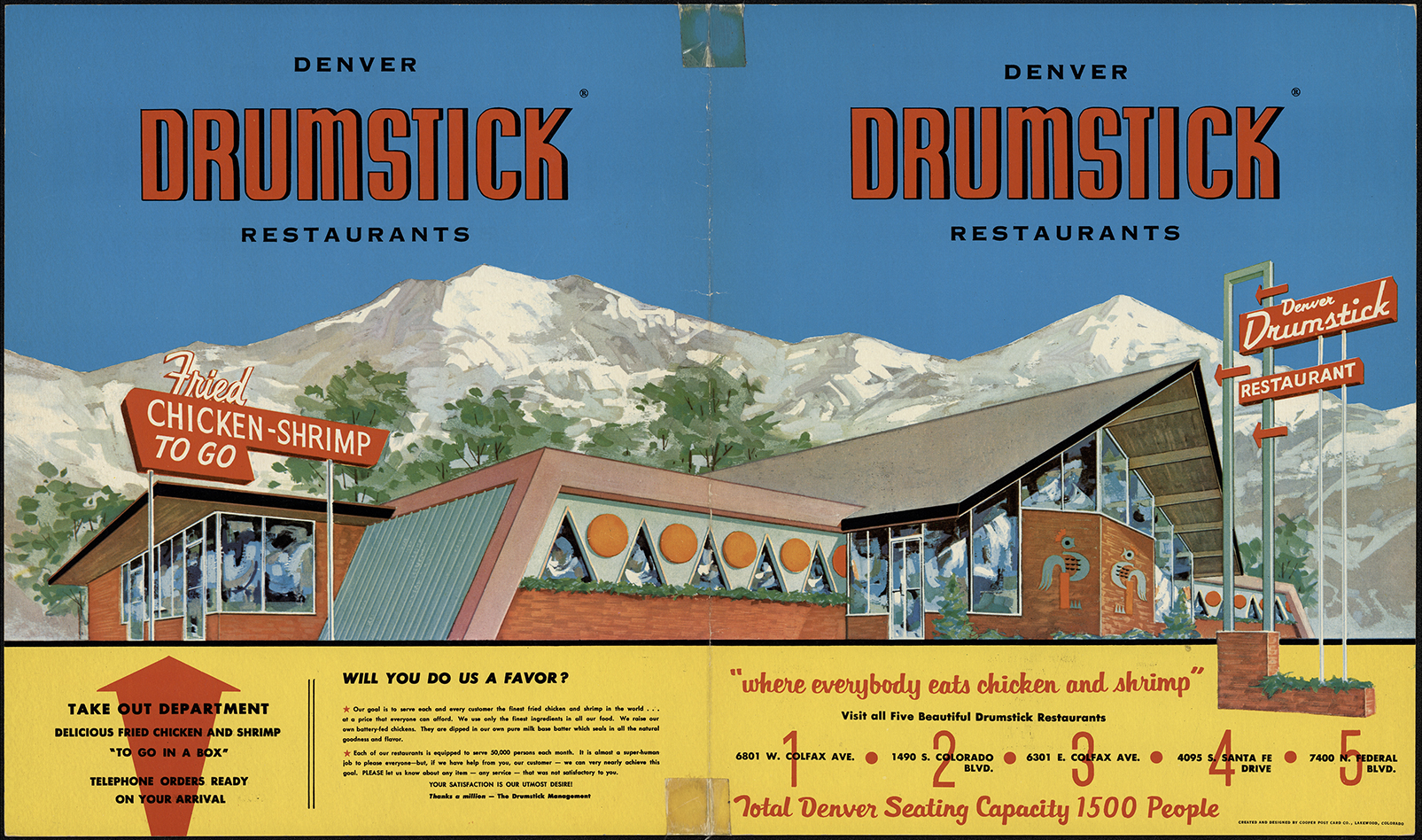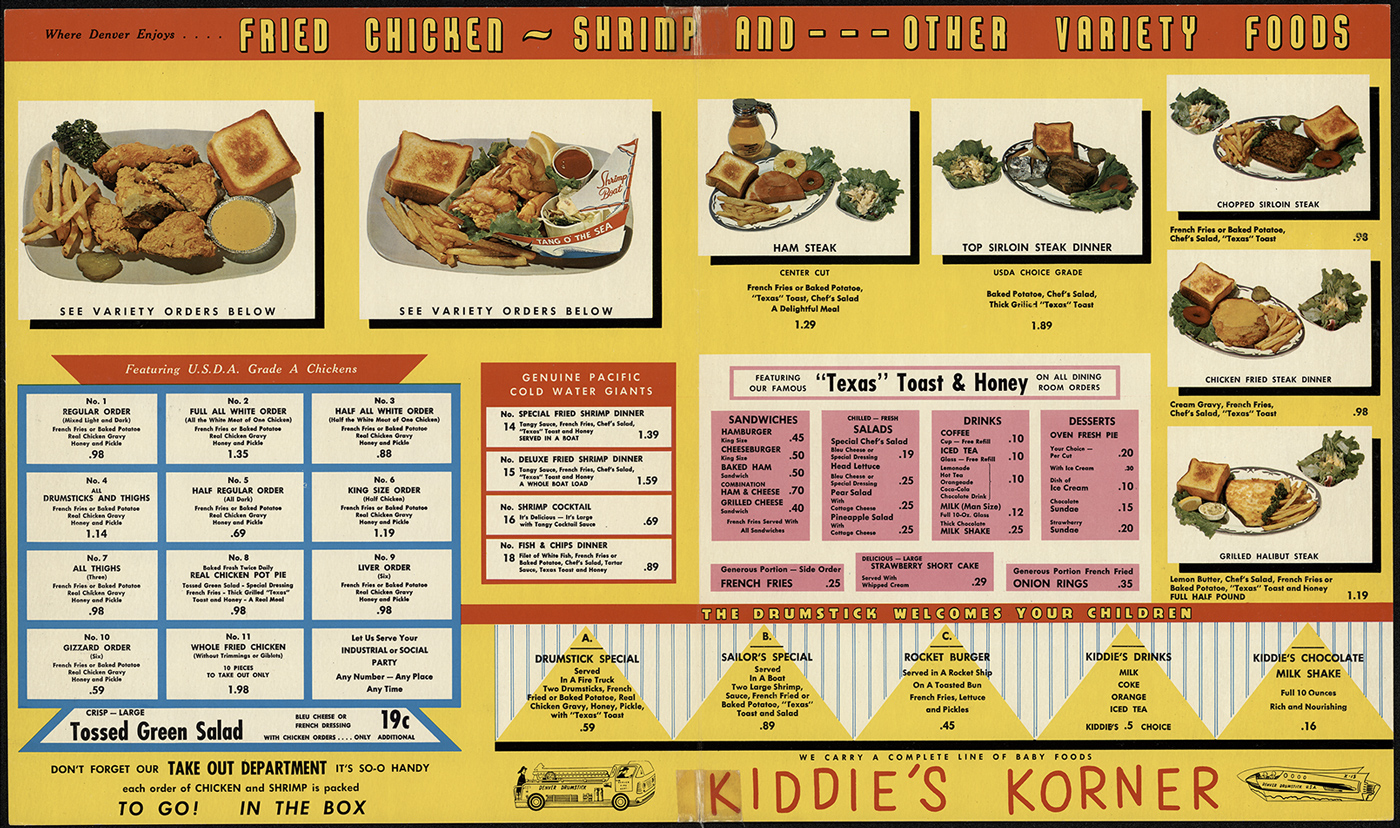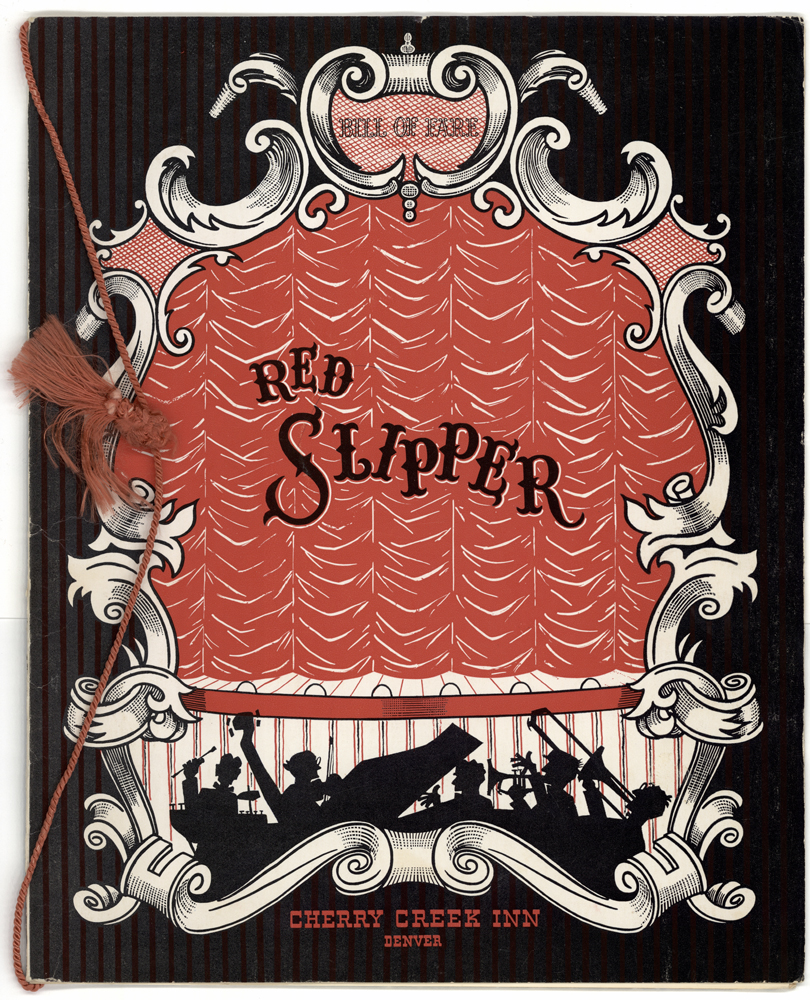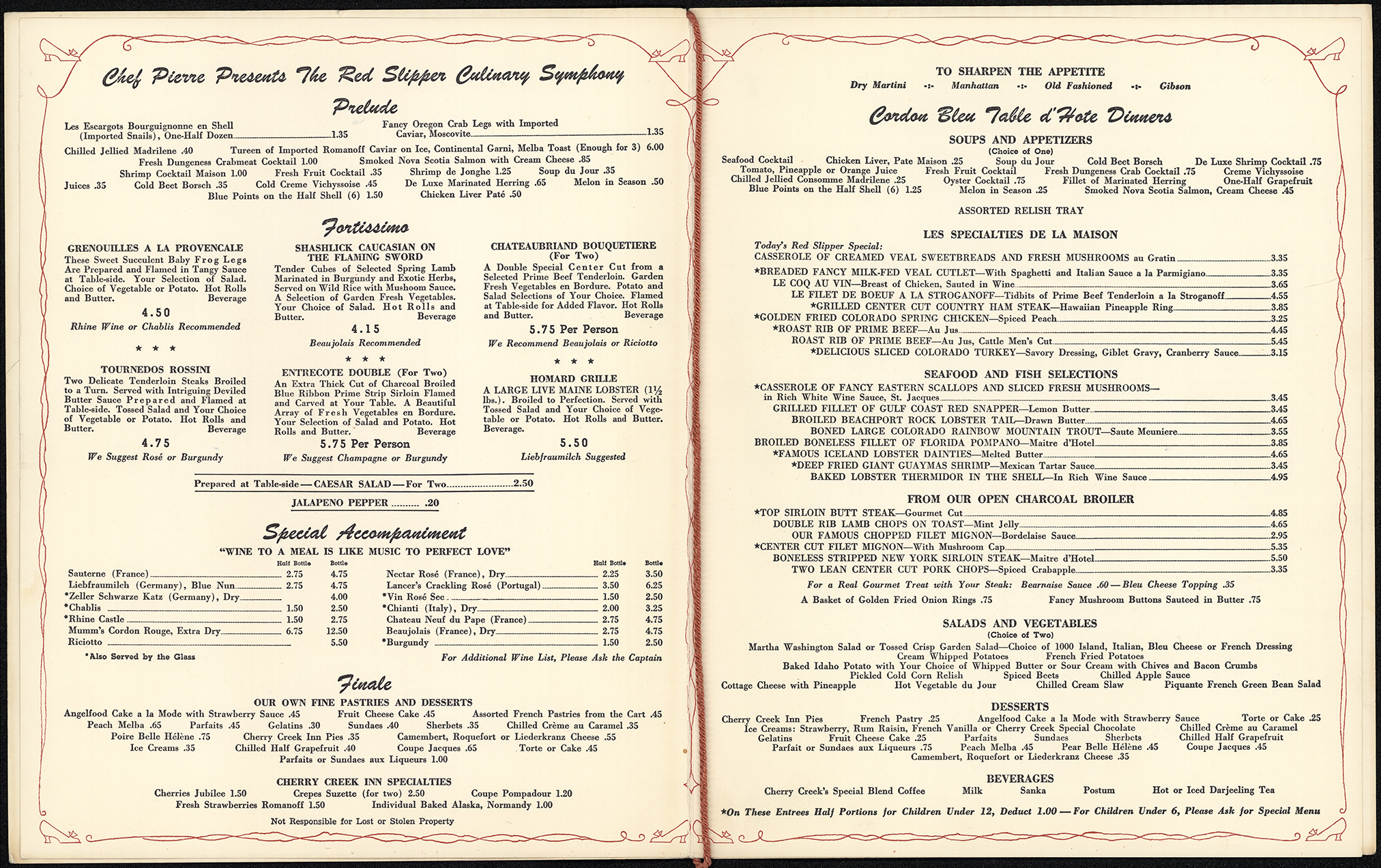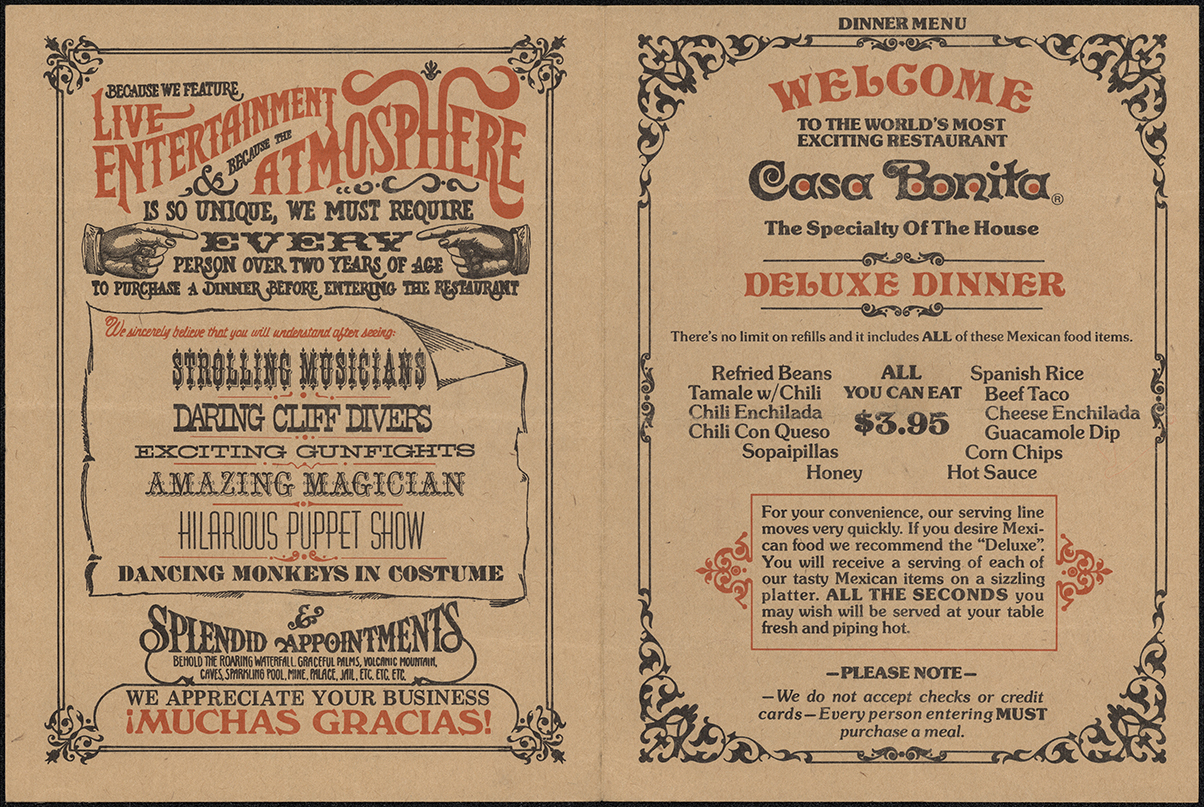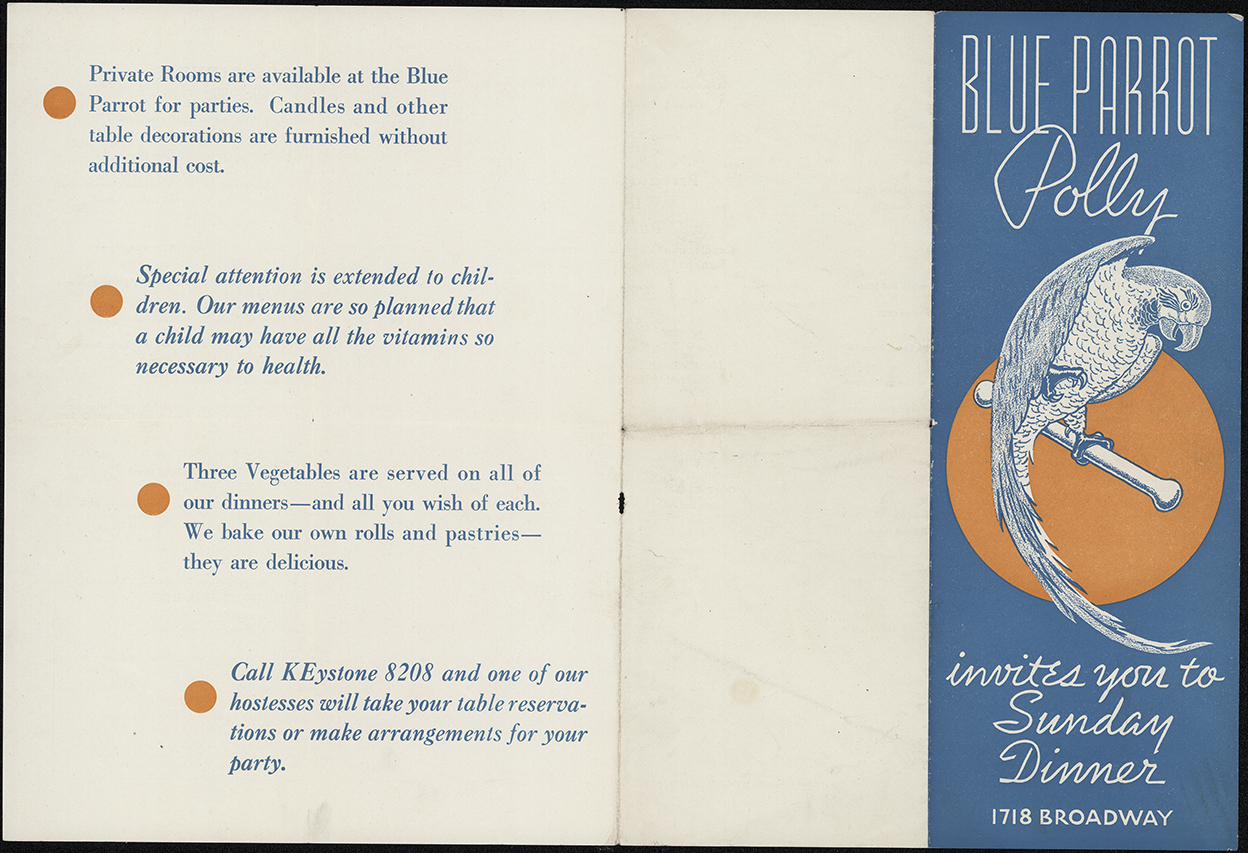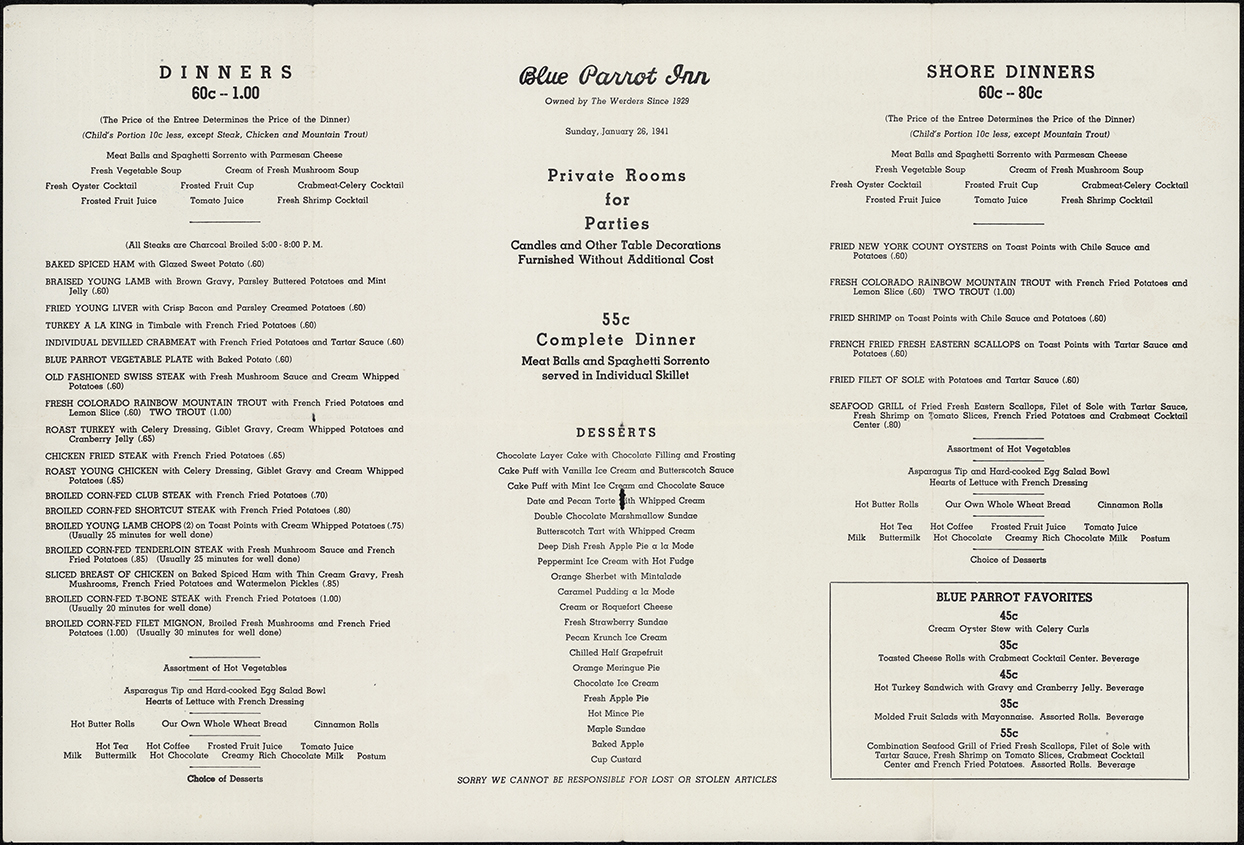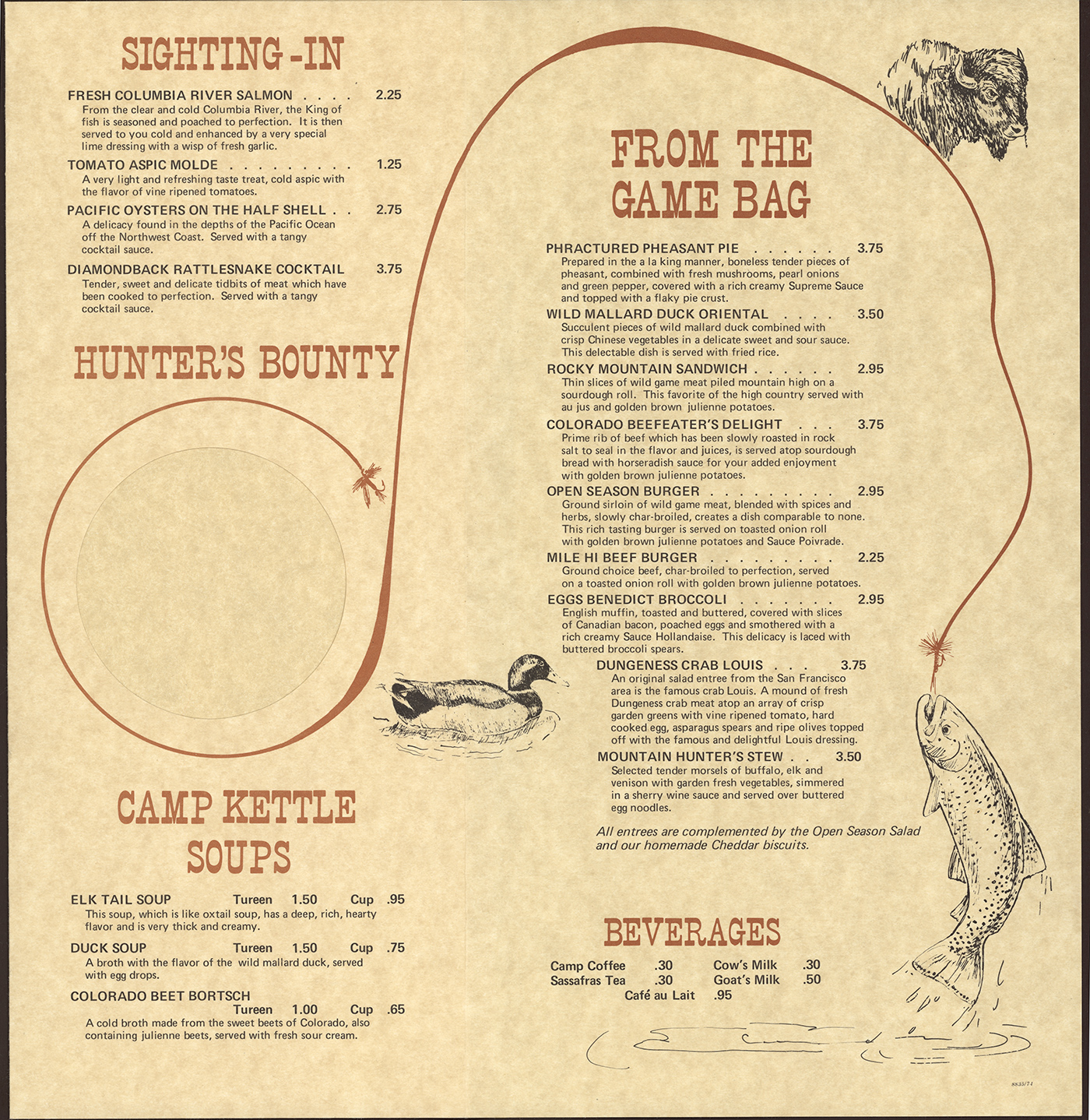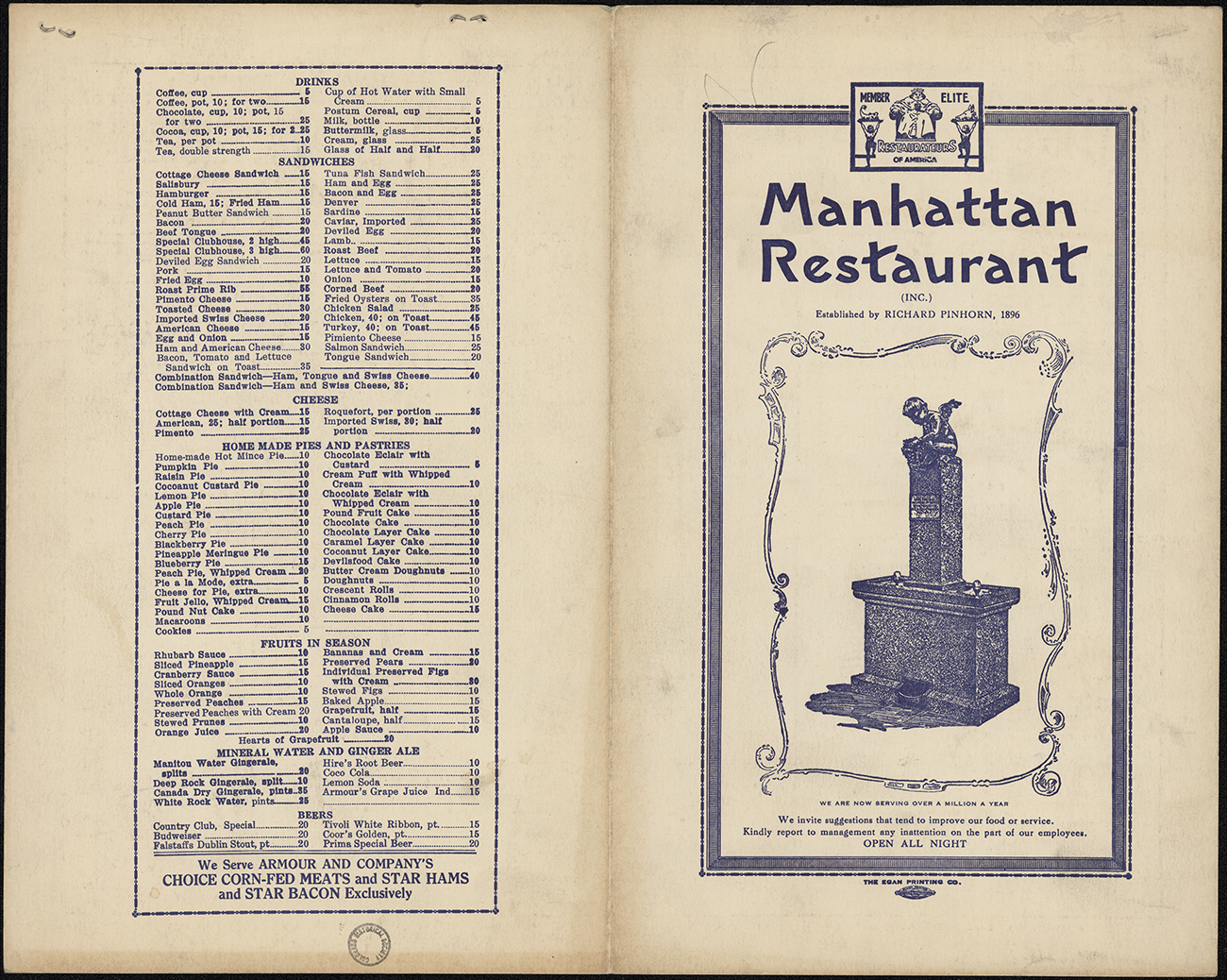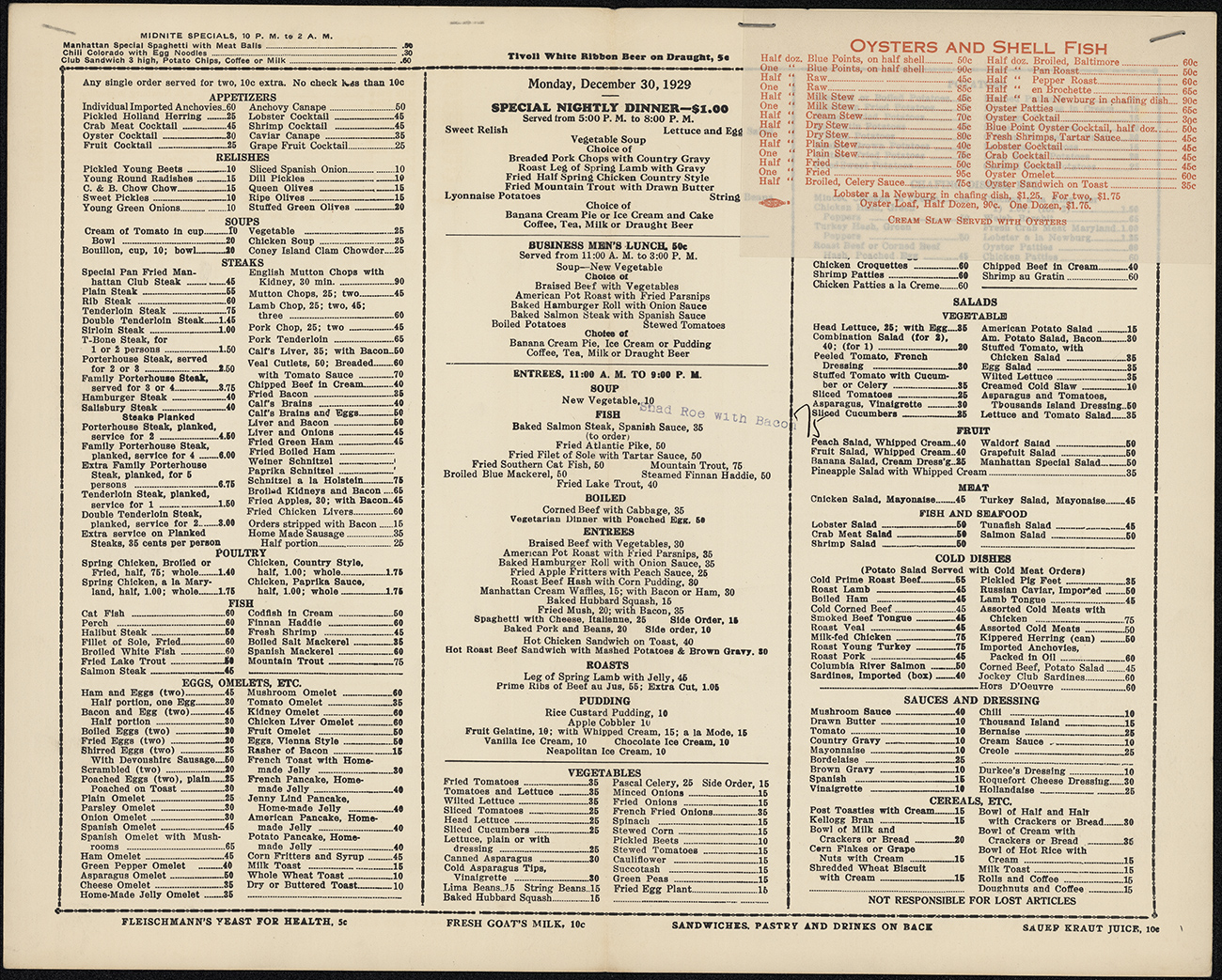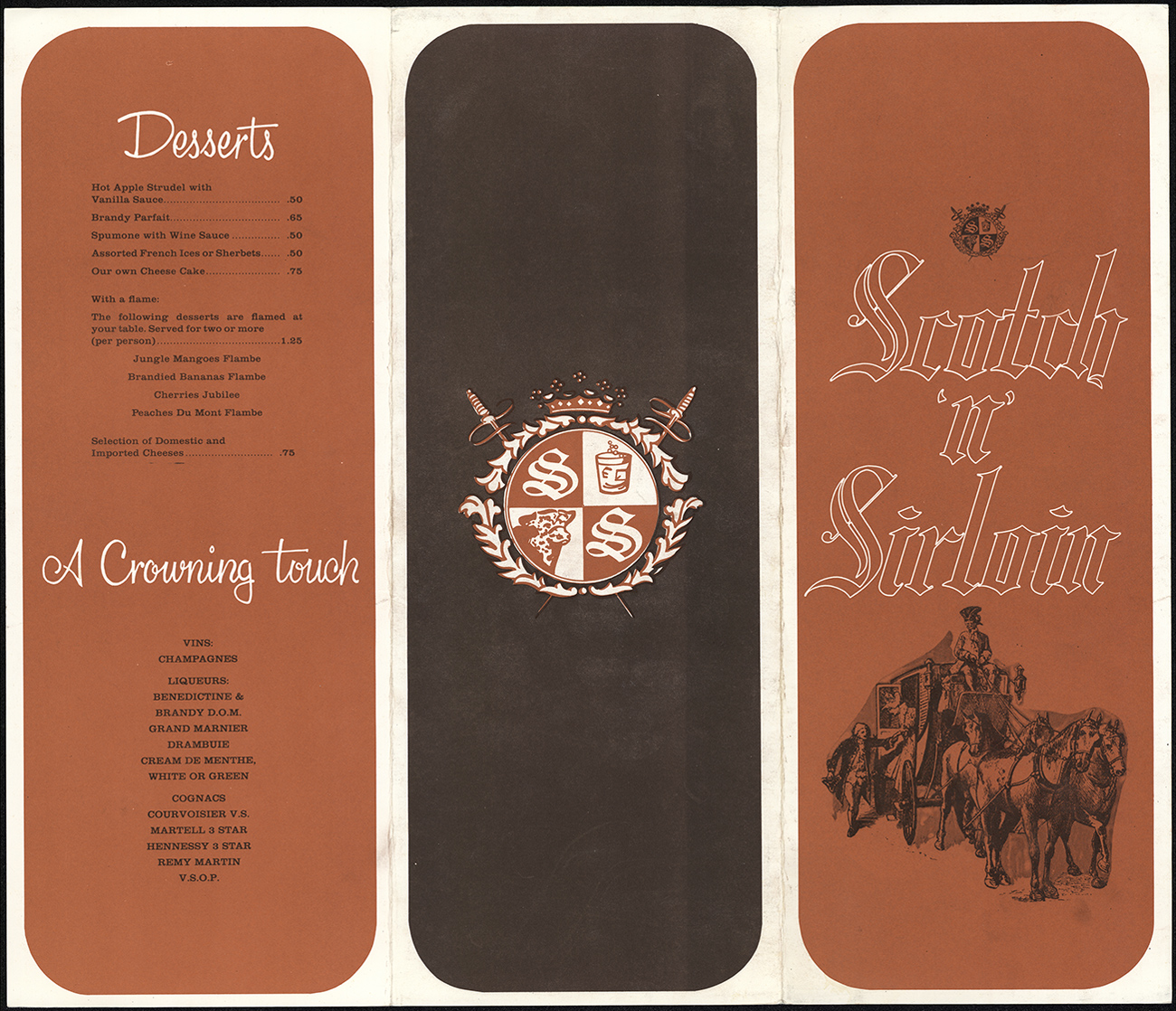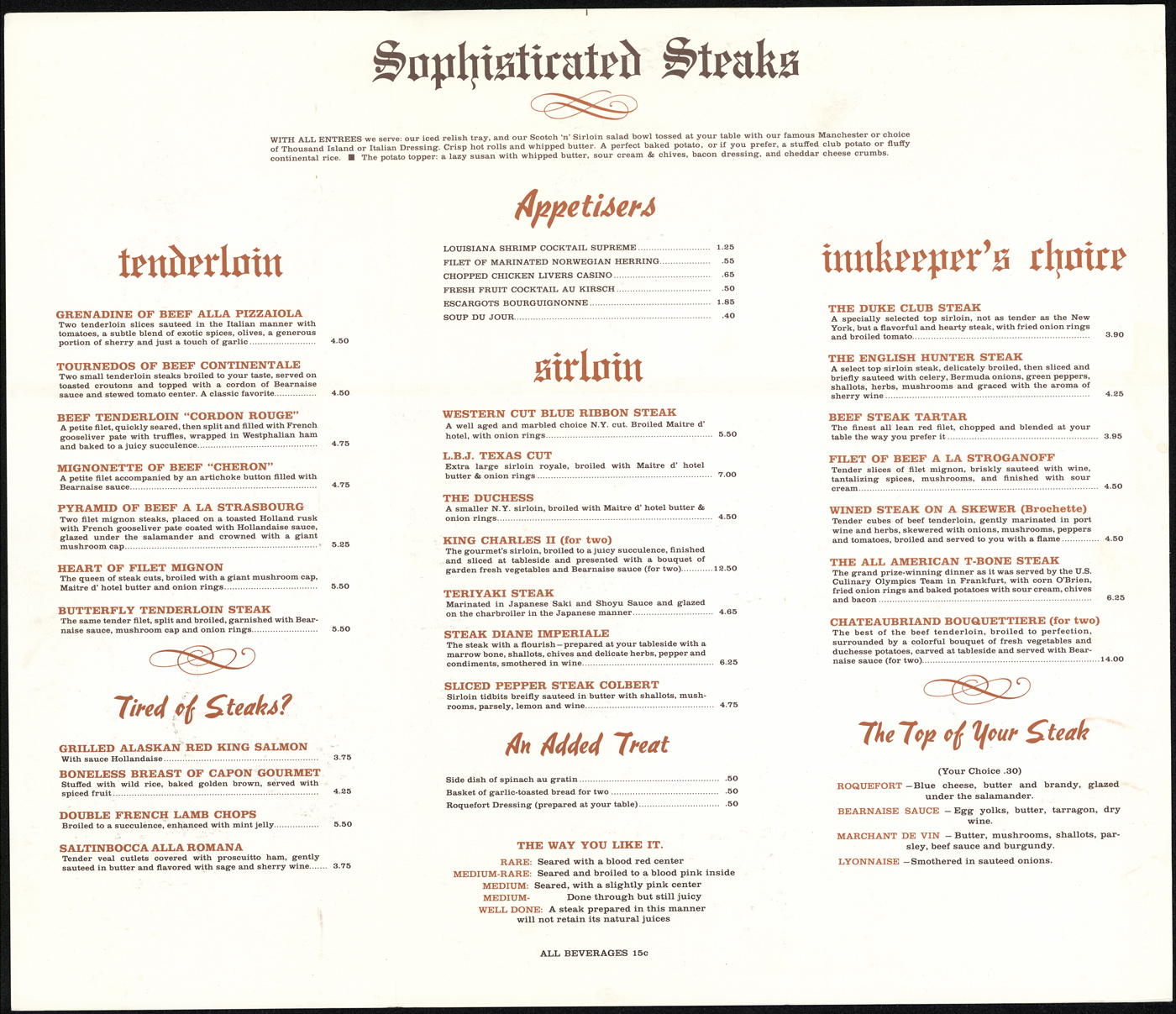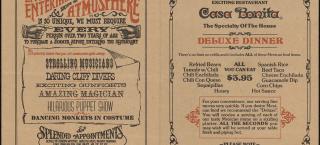
Story
Restaurants and Menus
In the Stephen H. Hart Library & Research Center, we regularly assist researchers—from scholars to students, authors to filmmakers—in finding the Colorado history they need for their projects. Some of these projects are for private, personal use—such as genealogy research—but others are destined for the larger world as a film or book. It’s always a joy when one of those books comes back to us, to be added to our Archives collection.
One such gem is Lost Restaurants of Denver, by Robert and Kristen Autobee. Published earlier this year, the book looks at mile-high restaurants, from the very beginning of our town’s recorded history to the eateries within recent memory. It highlights establishments that likely would have been famous in our grandparents’ day (or infamous, depending on the cooking!), but might be completely unknown to Denverites today. The book includes stories, images of the restaurants and their menus, and even selected recipes for delicacies like the “North Denver Canoli” (that’s how it’s spelled, and it’s not what you’d expect—it involves meat), and egg rolls from the Lotus Room.
The authors of this lovely book dedicated significant time to researching our menu and photography collections, veritable gold mines of information about eating establishments past. Our menu collection in particular is somewhat underutilized, and it’s a fascinating trove of about ten linear feet of menus from around the Front Range, dating largely from the 1920s through the 1990s. The bulk of the materials fall between the 1960s and ’90s, and they document local favorites of both high and low cuisine, from the Denver Drumstick to the Red Slipper.
Foodies literally drool over these materials, but others may wonder why a museum such as ours saves something as ephemeral as menus. What might researchers learn from an old Casa Bonita menu, for example?
Well, as you examine menus from decades past, patterns emerge. What we eat says a lot about who we are, and how that changes over time. Our culinary tastes are shaped by the local food distribution networks and which ingredients are available—for example, can you imagine what it would take to ship oysters to Colorado in the 1880s? Pell’s Oyster House managed that feat eight months out of the year by shipping live oysters via train in vats of ice water. Fortunately, we’re not dependent upon such arduous methods any longer!
Food culture is also shaped by the local economy and lifestyles—sit-in diners with many sandwich and pie options were common in Denver during the Great Depression, and a local favorite barbeque restaurant, the Humpty Dumpty BBQ, changed to the Humpty Dumpty BBQ Drive-In during the explosion of car culture in the ’60s.
Menus also document how a place sees itself, and how it self-advertises to others. For example, Open Season, in the former Stapleton Airport, featured western-themed dishes that are not likely to end up on Denverites’ tables on a regular basis but have come to represent our outdoorsy brand. It’s easy to imagine travelers from the East Coast, or even from abroad, ordering pheasant pie or rattlesnake and loving the western kitsch of it all.
And finally, menus sometimes just tell it like it is. For much of Denver’s history, beef was what was for dinner. Not just beef, but, to be more specific, steak. The love of a nice slab of steak is documented in the Manhattan’s 1920s list of available cuts for which they were famous. In the 1970s, Scotch & Sirloin’s listed steak 21 different ways, including the unusual “Grenadine of Beef Alla Pizzaiola.” Scotch & Sirloin’s menu actually contains a section entitled “Tired of Steaks?” which features a paltry four dishes of salmon, lamb, veal and capon (rooster).
Like a parent proudly marking off a child’s height against a wall, perusing the menu collection offers a foodie researcher innumerable hatch marks demonstrating the evolution of Denver food culture. These ephemeral documents serve as tools for culinary nostalgia, and for better understanding the history of our town. The book Lost Restaurants of Denver offers a guided tour through the highlights of this advancement. Both the book and the menu collection are freely available for viewing by the public in our Library & Research Center, Wednesday through Saturday during museum hours, no appointment necessary. To plan a visit, see our webpage.

